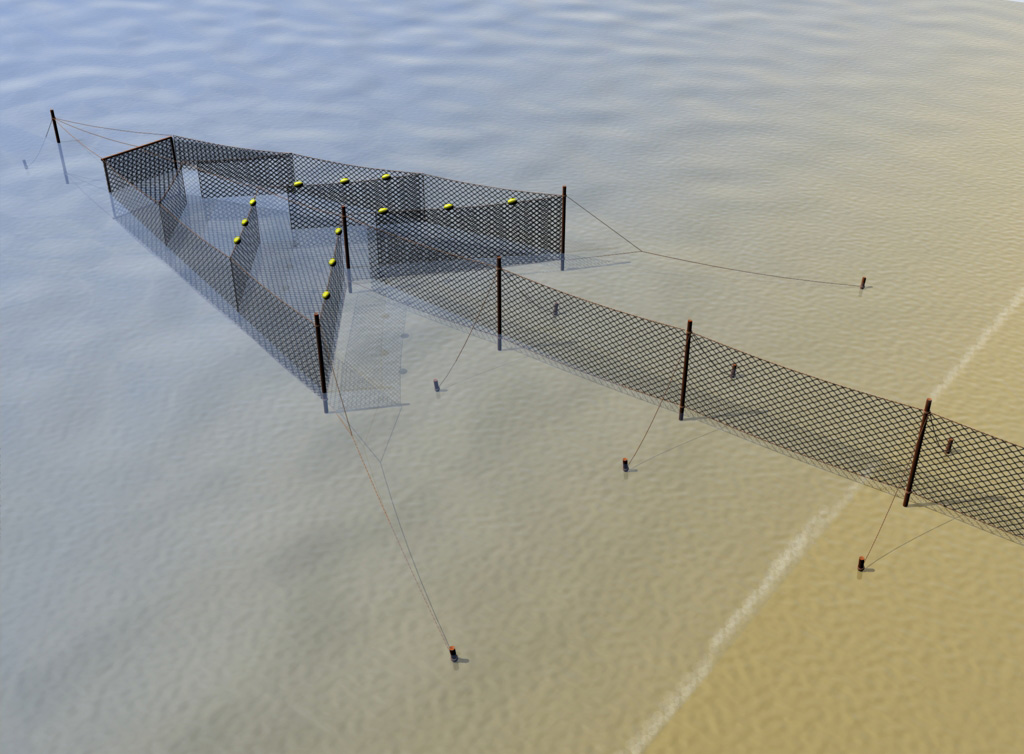Stake Net
Summary
A stake net has a long vertical wall of netting held up by a line of strong wooden poles erected upwards from the beach, running at right angles to the shoreline, often several hundred metres long, that is intended to interrupt the natural swim of the fish and direct them along it away from the shore and into a series of traps.

Environmental impact
Generally an environmental method of targeting fish that are close inshore. It is usually a seasonal fishery when the target species are migrating or known to the moving close along the shorelines at certain times of the year. Therefore by-catch is minimised by not having the gear in the water all the year round.
The size of species caught can be easily regulated by specifying a minimum mesh size that can be used. there is minimal seabed impact as the gear is fixed and does not move across the seabed at all. There will be some intertidal seabed disturbance when the gear is initially set out but this is in an already highly mobile area of the seabed.
The bag net has however historically been blamed as having a contribution to the decreasing numbers of salmon and sea trout entering the UK river system. It has been claimed that along with bag nets that the gear has been too effective in targeting salmon and sea trout as they approach the river mouths.
Gear classification
Possible bycatch
-
- Flats